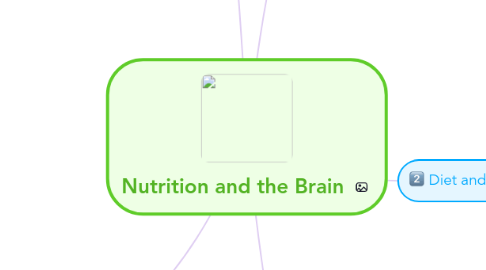Nutrition and the Brain
by Jeri Randall

1. Eating Environment
1.1. Making changes to the environment where students eat can promote healthy eating habits
1.2. Students are often faced with a limited time to eat their lunches before they are herded onto the playground. Often times, the school cafeteria is loud and disorganized. Students simply do not have time to finish eating their meals, thus resulting in a loss of key nutrients.
1.3. Cafeterias that are kept clean, and hold structure can promote healthy eating habits. Research has shown that students who can see the process of healthy foods being prepared in the cafeteria were more likely to eat them. In addition, students who participated in the growing and maintaining of a fruit and vegetable garden at school showed a higher interest in nutritious food.
1.4. Sifferlin, 2015
2. Brain Food
2.1. Foods that Improve Memory and Brain Functions
2.2. Salmon: Contains Omega 3 which reduces cognitive decline.
2.3. Cocoa: Contains flavanols, an antioxidant that increases learning, memory, and boosts brain power.
2.4. Nutritional Yeast: Contains folate, and vitamin B which promotes healthy fetal brain development.
2.5. Tumeric: Contains curcumin, an antioxidant that helps prevent plaque related build up in the brain that relates to Alzheimer's.
2.6. Spinach: Contains lutein, and antioxidant that protects from free radical damage and inflammation.
2.7. Avocado: Contains Vitamin E which slows cognitive decline in elderly individuals.
2.8. Eggs: Contains choline and vitamin B which enhances memory and cognition. Eggs are essential for production of phosphatidylcholine which is a component of producing cell membranes for brain cells.
2.9. Celery: Contains luteolin, an antioxidant that protects from inflammation, cognitive aging, neurodegenerative diseases, enhances memory, learning, and spatial awareness.
2.10. Rosemary: Contains carnosic acid which enhances learning and spatial awareness, reduces stress and anxiety, prevents neuron damage, and protects against Alzheimer's disease.
2.11. Yogurt: Contains probiotics which improve mental outlook and lowers stress and anxiety.
2.12. Turner 2017
3. Healthy Students Means Better Performance
3.1. The health of a student is directly related to their academic performance
3.2. Healthy eating and exercise results in good behavior. Teachers have reported that students who consume small amounts of sugar were less likely to display aggressive behaviors.
3.3. Students who eat breakfast that contains lean proteins, whole fruits, and whole grains are properly fueled to take on the school day. Schools can help students achieve healthy eating habits by promoting proper nutrition around campus.
3.4. Ehrlich, 2008
4. Diet and Mental Health
4.1. Vitamins and Minerals Support Proper Brain Functions
4.2. Low levels of Omega 3s can result in mental health problems such as: ADHD, depression, and schizophrenia.
4.3. Supplements that contain DHA fatty acids can improve learning and behavior. Vitamins and mineral supplements that work together with a healthy diet are also known to decrease violent behaviors in children and teenagers.
4.4. The brain is an organ that is affected by poor health habits. When the brain lacks key nutrients, this can cause a lack in brain functions and development.
4.5. Parletta, 2016
5. Too Much Sugar
5.1. Diets packed with fructose, especially high fructose corn syrup, can impact learning and memory
5.2. Foods with artificial flavors and colors can also have negative effects on student behavior and the ability to focus.
5.3. Sugar can be a dangerous and addicting component from the foods that we eat. Sugar activates the reward areas of the brain which can make it difficult to lessen the amount of sugar students consume.
5.4. Levi, 2017; Oaklander, 2016


